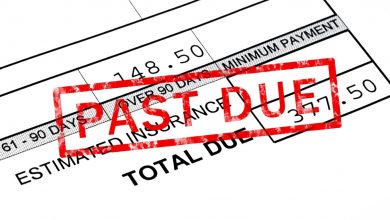Government Shutdown Delays 2026 Social Security COLA Announcement As Millions Left Waiting For Inflation Data – Financial Freedom Countdown
The ongoing partial government shutdown has ground federal operations to a halt, delaying crucial data releases that millions of Americans rely on.
Among the casualties: the September Consumer Price Index (CPI) report, which determines next year’s Social Security cost-of-living adjustment (COLA).
Without the inflation data, the Social Security Administration (SSA) can’t calculate the increase millions of retirees and beneficiaries are expecting for 2026.

Each October, the SSA uses inflation data from the third quarter; July through September, to determine how much Social Security and Supplemental Security Income (SSI) payments will rise.
The index used, known as the CPI-W (Consumer Price Index for Urban Wage Earners and Clerical Workers), measures the cost of everyday goods like food, rent, and medical care.
A delay in the CPI means a delay in knowing how much beneficiaries’ checks will increase.
A Rare Disruption to a Closely Watched Announcement

The COLA announcement is one of the most anticipated moments of the year for retirees.
It usually comes just days after the Bureau of Labor Statistics (BLS) publishes the September inflation report. But with most BLS staff now furloughed and the release schedule frozen, that tradition is in jeopardy.
Even if Congress reaches a funding deal soon, processing and publishing the data could still take weeks.
The Last Time a Shutdown Delayed the COLA

The only other time this happened was during the 2013 government shutdown, when the COLA announcement was pushed back.
Then, as now, the delay created confusion and anxiety among seniors who depend on Social Security for their monthly expenses.
While the payments themselves will continue uninterrupted; since Social Security operates from a trust fund, not annual appropriations, the uncertainty adds another layer of stress for beneficiaries living on fixed incomes.
Tens of Millions Left in the Dark

More than 72.5 million Americans currently receive Social Security or SSI benefits. For many, the annual COLA determines how they’ll budget for groceries, rent, and healthcare in the year ahead.
The Senior Citizens League (TSCL), one of the largest nonpartisan seniors’ advocacy groups, warned that the delay could “leave tens of millions of older Americans waiting in limbo” at a time when household costs remain elevated.
What the 2026 COLA Might Have Been and Still Could Be

Before the shutdown, TSCL projected a 2.7% COLA increase for 2026; a modest boost that would raise the average monthly benefit by about $54, from $2,008 to $2,062.
That estimate was based on inflation trends before the shutdown, but the final figure won’t be confirmed until the CPI data are released and verified by BLS.
“The Data Is Already Collected” But Processing May Take Time

Some analysts note that the September inflation data had already been gathered before the shutdown began. A government shutdown could potentially delay an announcement of the COLA, but remember, the data is for September and that has already been collected.
Still, with BLS analysts unable to finalize or publish the report, an official release could take weeks even after the government reopens.
Payments Will Continue But Anxiety Will Too

Despite the delay in the COLA announcement, Social Security checks will continue to go out on schedule.
That’s because the program is financed through payroll taxes, not annual congressional budgets. But while payments aren’t at risk, the uncertainty over how much they’ll increase in 2026 is already weighing on millions of seniors watching inflation erode their purchasing power.
A Waiting Game for America’s Retirees

Until Congress strikes a deal to reopen the government and the BLS can process the September CPI report, the 2026 COLA will remain a mystery.
For now, retirees must sit tight and hope that Washington’s political gridlock doesn’t keep them waiting too long for answers about their next raise.
Like Financial Freedom Countdown content? Be sure to follow us!
Social Security’s “Full Retirement Age” May Get a Rebrand; But Critics Say It Misses the Real Problem

Most Americans don’t actually know when they qualify for their full Social Security benefits. A recent survey by the Nationwide Retirement Institute found that only 21% of adults could correctly identify the age when they can claim 100% of their earned benefits. The confusion isn’t surprising; the program’s terminology has long been a tangle of jargon and outdated phrases.

Starting September 30, 2025, the Trump administration will end the use of paper checks for Social Security benefits, completing the Social Security Transition to Electronic Payments. While more than 99% of seniors are already set up electronically, a small group still receiving paper checks must act now to avoid payment delays. Beneficiaries who haven’t switched yet will need to enroll in direct deposit or request a Direct Express card to keep their monthly benefits arriving on time. This change is part of a broader government effort to reduce fraud, improve efficiency, and save taxpayer dollars.
Trump’s Social Security Upgrade Ends Paper Checks on Sept. 30. What Seniors Must Do Now

Did you find this article helpful? We’d love to hear your thoughts! Leave a comment with the box on the left-hand side of the screen and share your thoughts.
Also, do you want to stay up-to-date on our latest content?
1. Follow us by clicking the [+ Follow] button above,
2. Give the article a Thumbs Up on the top-left side of the screen.
3. And lastly, if you think this information would benefit your friends and family, don’t hesitate to share it with them!

John Dealbreuin came from a third world country to the US with only $1,000 not knowing anyone; guided by an immigrant dream. In 12 years, he achieved his retirement number.
He started Financial Freedom Countdown to help everyone think differently about their financial challenges and live their best lives. John resides in the San Francisco Bay Area enjoying nature trails and weight training.
Here are his recommended tools
Personal Capital: This is a free tool John uses to track his net worth on a regular basis and as a retirement planner. It also alerts him wrt hidden fees and has a budget tracker included.
Platforms like Yieldstreet provide investment options in art, legal, real estate, structured notes, venture capital, etc. They also have fixed-income portfolios spread across multiple asset classes with a single investment with low minimums of $10,000.




